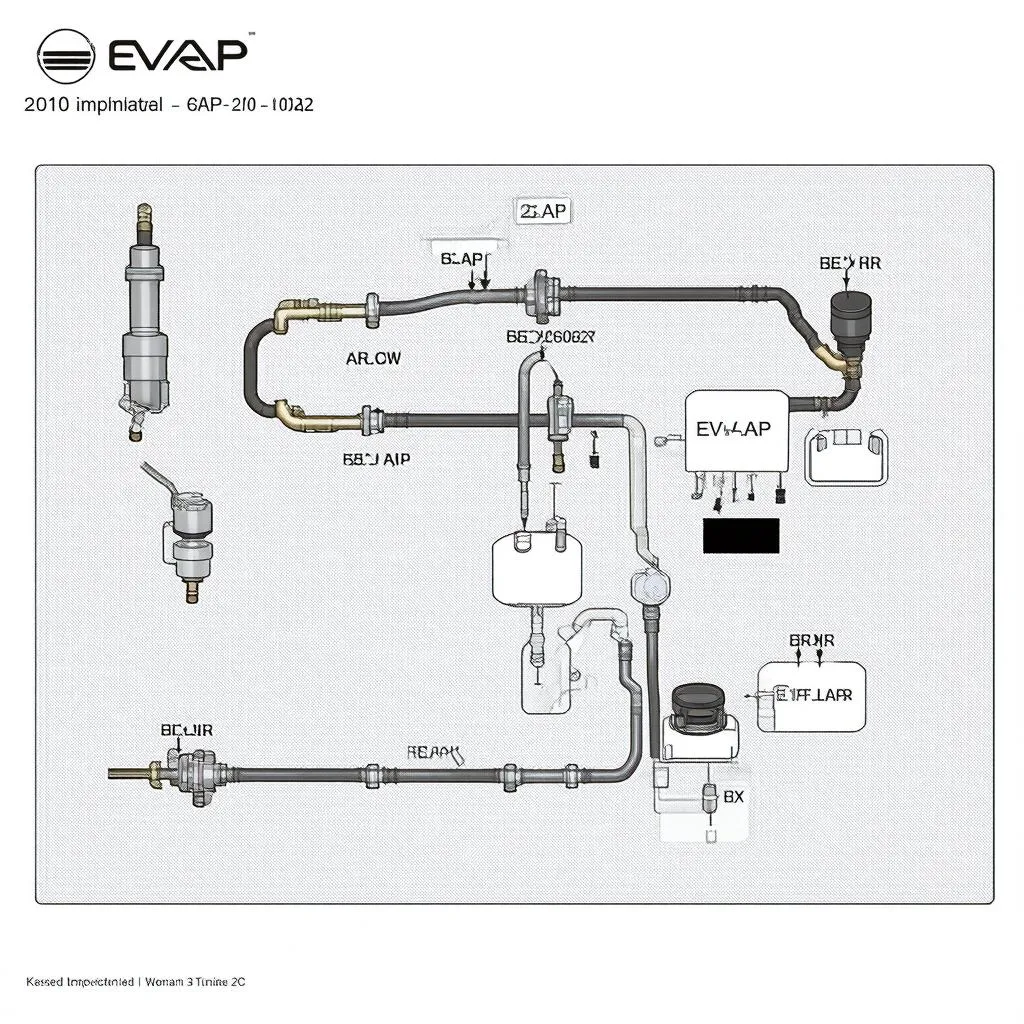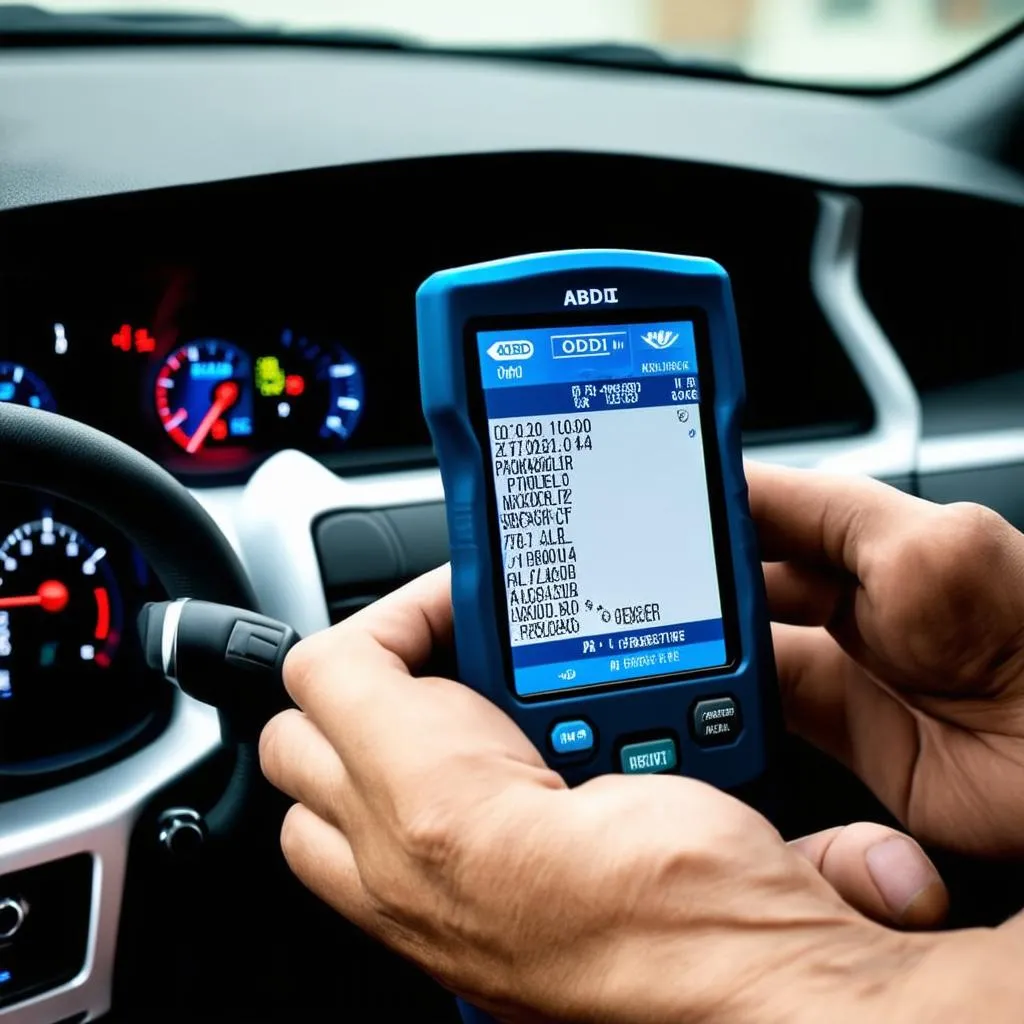Have you ever felt like your car was trying to tell you something? Maybe you’ve noticed a strange smell, a flickering light, or a change in performance. These subtle signs can often be the first indication that something’s wrong, and a code like “P0442” is your car’s way of saying, “Hey, there’s something I need you to take a look at.”
Understanding the “P0442” Code
The “P0442” code is a common one, particularly in vehicles like the 2010 Impala. It’s a diagnostic trouble code (DTC) that signals an issue with your vehicle’s evaporative emissions control system (EVAP). Essentially, it’s like a leak in the plumbing system of your car’s fuel vapor recovery system. This system prevents fuel vapors from escaping into the atmosphere, which is crucial for environmental protection and maintaining fuel efficiency.
Think of it like this: Imagine your car’s fuel tank as a giant, sealed container. When you fill your tank, some of the fuel evaporates and turns into vapor. This vapor would normally escape into the atmosphere, but your car has a system to capture it. This system, known as the EVAP system, routes the vapor through a series of components including the canister, vent valve, and purge valve, eventually leading to the engine for combustion.
The “P0442” code pops up when the system detects a problem with the vent valve. This valve plays a crucial role in releasing excess vapor from the canister when needed. It’s like a tiny safety valve in the system. But, when this valve malfunctions, it can prevent the EVAP system from working properly, resulting in the “P0442” code.
Why It Matters and What It Might Mean
Now, you might be thinking, “So what? It’s just a code.” But, there’s more to it than meets the eye. The “P0442” code could indicate a serious issue that needs to be addressed. A faulty vent valve can lead to several problems, including:
- Increased Fuel Consumption: The EVAP system is essential for fuel efficiency. A malfunctioning vent valve could lead to increased fuel consumption, costing you more at the pump.
- Emissions Failure: A leaking EVAP system can result in excessive emissions, potentially leading to a failure in your vehicle’s emissions test.
- Rough Engine Performance: In severe cases, a leaking EVAP system can lead to rough engine performance or even misfire issues, potentially causing further damage.
How to Fix the “P0442” Code
So, what can you do if you encounter the “P0422” code? Here are some steps you can take:
- Inspect the Vent Valve: The first step is to locate and inspect the vent valve. You can find this valve typically near the charcoal canister under the hood. Check for any signs of damage, leaks, or corrosion.
- Check for Vacuum Leaks: A leak in the vacuum lines connected to the vent valve can also cause the “P0442” code. Carefully inspect the vacuum lines for any cracks, loose connections, or signs of damage.
- Replace the Vent Valve: If you suspect a problem with the vent valve, it’s best to replace it. The vent valve is a relatively inexpensive component, and it’s a simple fix that can resolve the issue.
- Clear the Code: After addressing the underlying issue, you’ll need to clear the “P0442” code using a OBDII scanner. This will reset the system and allow you to monitor its performance.
Helpful Tips for Car Owners
Remember, while we’ve discussed the most common causes of the “P0442” code, it’s always a good idea to consult with a qualified mechanic if you’re not comfortable diagnosing or repairing the issue yourself. A mechanic can use specialized tools to pinpoint the exact problem and ensure a proper fix.
What to Do Next?
If you’ve got any questions or need further guidance on tackling the “P0442” code, reach out to our team at techcarusa.com. We’re here to help you keep your car running smoothly.
 2010 Impala EVAP System
2010 Impala EVAP System
 OBDII Scanner
OBDII Scanner
We understand that navigating car repairs can feel overwhelming, so feel free to contact our team of experts anytime. We’re available to help you through the process of diagnosing and fixing any automotive issues, ensuring your car is always running smoothly and efficiently.